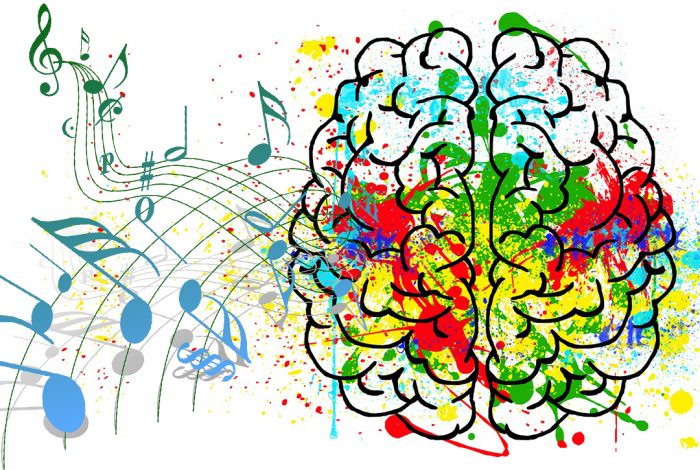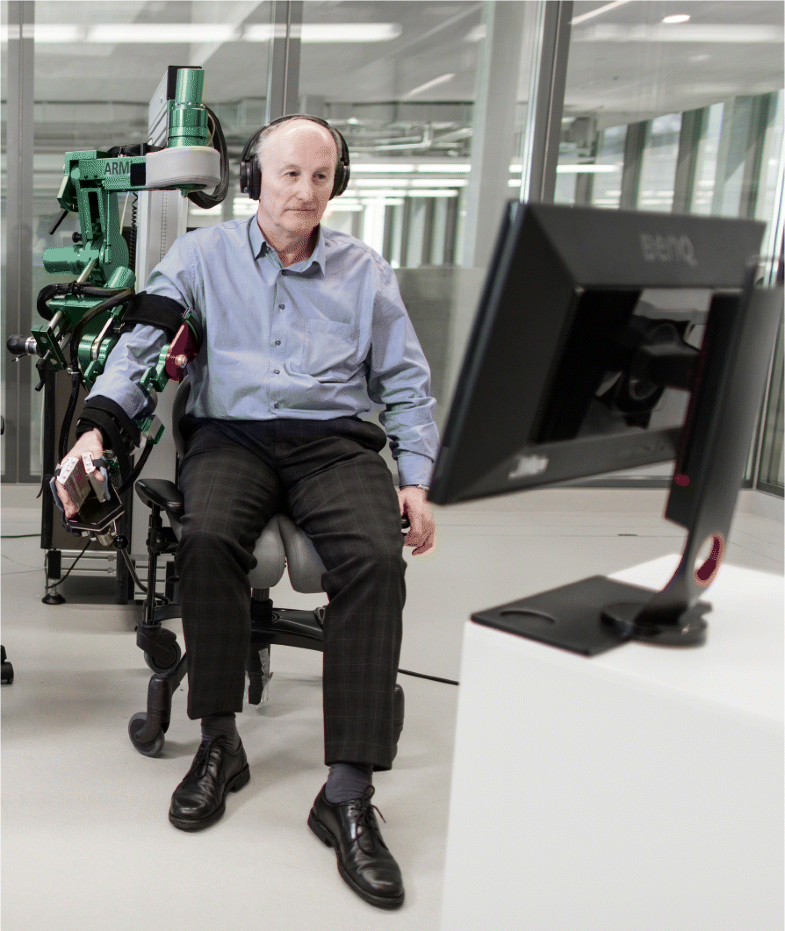I’m always careful to keep in mind that there are TBI Survivors who will never fall into certain categories – this is one of those times. Although there can be creative outlets for a large percentage of Survivors, there will always be limitations for some. Since every brain injury presents its own challenges, I wanted to acknowledge that first and foremost. Let’s explore how art and music therapy after tbi can make a difference!
Creative music and art therapy provide help for recovery, recuperation and cognition through listening to music, learning to play an instrument, or through creative art and writing. Music is powerful in the way it can conjure memories of a certain time or place in a person’s life. It also can stir emotions through the song’s structure and words. Learning to play music can create a free flow that comes to a person effortlessly (it seems, at least), or it can be tedious and frustrating to others. Either way, it builds memory in different ways – either by repetition and learning, by building retention and memory capabilities…or by listening to music. This can bring a feeling of “knowing” that is like no other – knowing the song, or knowing it sounds familiar, knowing the words, and also having memories flood back that may relate to another time in a survivor’s life. All of these things can be helpful, but all may not bring positive memories. Nonetheless, remembering things can bring a certainty that “all is not lost”, and can provide a foundation on which a new life can be built, and new memories can be made and added in the days ahead.
The Department of Defense website offers information from the Centers for Disease Control and Prevention saying that about 1.5 million people in the United States have a TBI each year and that 85,000 people have long-term disabilities. That’s a lot of people, and in turn, a lot of rebuilding of lives.
Music is a Healer
Here is an excerpt of an article about TBI recovery that illustrates how music and art therapy are being used in a military setting (Here’s the link to the story Brain Injury Sufferers Find Benefits in Music Therapy Program )
“The Creative Forces music therapy program assists with the needs of military patients and veterans who have been diagnosed with TBI, as well as their families and caregivers,” said Danielle Kalseth, 673rd Medical Operations Squadron creative arts therapist/music therapist. “Not only do we provide clinical services, we want to provide patients and their families access to the arts in the community.”
The music therapy program currently helps 30 patients rehabilitate from TBI, with new referrals every week. Patients who receive music therapy can participate in group or individual sessions, or a combination of both.
The program enables TBI sufferers to engage in a meaningful activity with others who are experiencing the same issues.
“Music therapy helps with more than just my memory; it helps with my mood too,” Young said. “On days when I’m in a bad mood, playing the guitar is a great way to change that.”
Art therapy is one of many treatment modalities used daily with brain injury patients throughout Brooks’ continuum of care. Art aids in the recovery process by allowing survivors to do something they enjoy. When utilizing art therapy as a treatment intervention, Brooks clinicians are working on various functional skills such as fine motor skills, gross motor skills, standing tolerance, endurance, communication, expression of feelings, relaxation, socialization, memory and problem-solving skills. (*end of excerpt)
You Gotta Have Art
Using art as therapy is also a great way to treat the effects of TBI and helps fuel recovery. When used as a therapeutic approach, it…
- helps eye-to-hand coordination (motor skills),
- strengthens a person through standing or sitting up,
- improves communication through personal interaction with others,
- helps memory and expression of thoughts/feelings.
Creating artwork also can be rewarding – bringing a feeling of accomplishment, and even relaxation. In short, it’s just a great outlet for sharing thoughts AND feelings in a creative way that builds coordination, self-awareness, and confidence.
Music Strikes A Common Chord For People
When it comes to music, it turns out that you don’t have to play an instrument to reap the benefits of cognitive improvement. Listening to music as therapy creates positivity, an improved mood, better focus, and better behavior.
Here’s a great excerpt from an article by Shantala Hegde on the Frontiers in Neurology website. Music-Based Cognitive Remediation Therapy for Patients with Traumatic Brain Injury. It’s an in-depth, clinically-based story about Music-Based Cognitive Remediation Therapy for Patients with Traumatic Brain Injury.
Here’s the excerpt:
From a neuroscientific perspective, indulging in music is considered one of the best cognitive exercises. With “plasticity” as its veritable nature, the brain engages in producing music indulging an array of cognitive functions and the product, the music, in turn, permits restoration and alters brain functions. With scientific findings as its basis, “neurologic music therapy” (NMT) has been developed as a systematic treatment method to improve sensorimotor, language, and cognitive domains of functioning via music. A preliminary study examining the effect of NMT in cognitive rehabilitation has reported promising results in improving executive functions along with improvement in emotional adjustment and decreasing depression and anxiety following TBI. (end of excerpt)
Don’t Write Things Off – Write Them Down!
In the world of a TBI Survivor, one of the most personal and reflective ways to share thoughts, feelings, desires, goals, progress, concerns, hopes, dreams (and more) is through writing and journaling. By sharing their thoughts through writing, a TBI Survivor can make huge strides toward healing (physically, mentally and emotionally). It brings self-awareness, self-expression, and can help rebuild after “loss of self” through reinvention and creativity. Journaling can be done individually, in a group or with assistance from caregivers or family. (Here is an excerpt from Journaling After Brain Injury, Written by Barbara Stahura, CJF)
Some good ways to start off writing a journal can start with these basic prompts:
- Today I feel…
- I feel stronger when…
- I’m proud of myself because…
- If I could change…
- Even though now I can’t (fill in the blank),
I can still…
- I am grateful for…
- I feel powerful when…
- I want my life to include…
- One year from today…
- When I was 10 (or some younger age), I…
- When I am 60 (or some age older than you are now),
I…
Remember, don’t worry about the “rules” of writing.
Just let your pen move across the page and let the words
flow. Be kind and don’t judge yourself or what you write.
Conclusion
Journaling is a very helpful practice after a brain
injury, both for the person with the injury and family
caregivers and members. Writing down your thoughts
and feelings about what is happening in your life can help
you develop safe ways to cope with change and create a
healthy new life.
(Excerpt from Journaling After Brain Injury, Written by
Barbara Stahura, CJF, and Susan B. Schuster, 2009, ©, All rights reserved – used with permission of authors)
Working To Find Therapeutic Healing Through Art and Music
Visual/Fine arts can be quite rewarding and can bring out the best in a person’s creative expression. It can help a TBI Survivor in many different ways, including the development of creativity, dexterity, motor skills and coordination, technique, and self-expression. In the book “Reinventing Oneself After Loss,” by Hilary Zayed, the author explores her meaning of loss, her search for a new identity, and the reinvention of her “new self” with her new self-awareness. Art became her vehicle for self-exploration as she struggled to build a new identity and move forward.
Hilary is a great example of a person who was quite different after her TBI, and her motivation and determination to take her life in a new direction resulted in finding a new passion for writing and art. Working primarily as a painter and mosaic artist, Hilary found that her new direction was a natural fit and that it was rewarding in many ways…although it was completely different from her previous life as a teacher, horseback rider, and accomplished flute player. She had lost a lot of memories of her life before TBI. She struggled with loss-of-self but decided to forge ahead and pursue what she felt were the gifts that had replaced her former abilities. Her journey took her to a new place, with a better sense of self – and a new identity. One that brought her joy and a sense of accomplishment. Although this is a best-case scenario, many Survivors can take Hilary’s lead, and find things that help complete their lives – even small things that make them happy, such as journaling, poetry, socializing, board games, crossword puzzles or word searches, etc. It all depends on what appeals to them! If they find that art is an interest, adult coloring books are fun and relaxing. If they want to draw, a sketchbook and pencils (or colored pencils) is an inexpensive and easy way to see if that’s their strong suit. The point is to help them search for the thing(s) that suit their desires, talents, and abilities. Creating art, writing and music can propel people to new heights of healing and cognition.
Maybe this will inspire you (as a Survivor) or as someone who loves and assists a TBI Survivor…find inspiration, and in turn, find your new self, or inspire someone to aspire higher!













